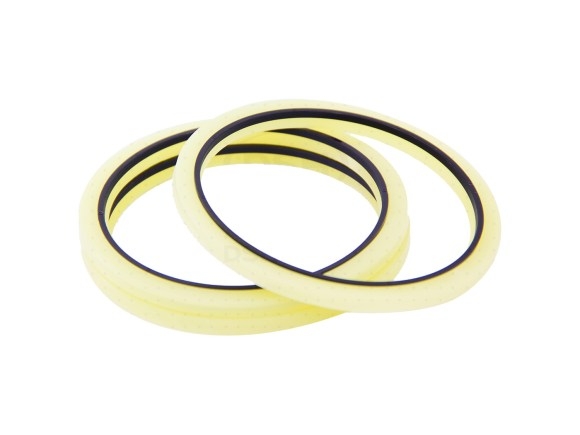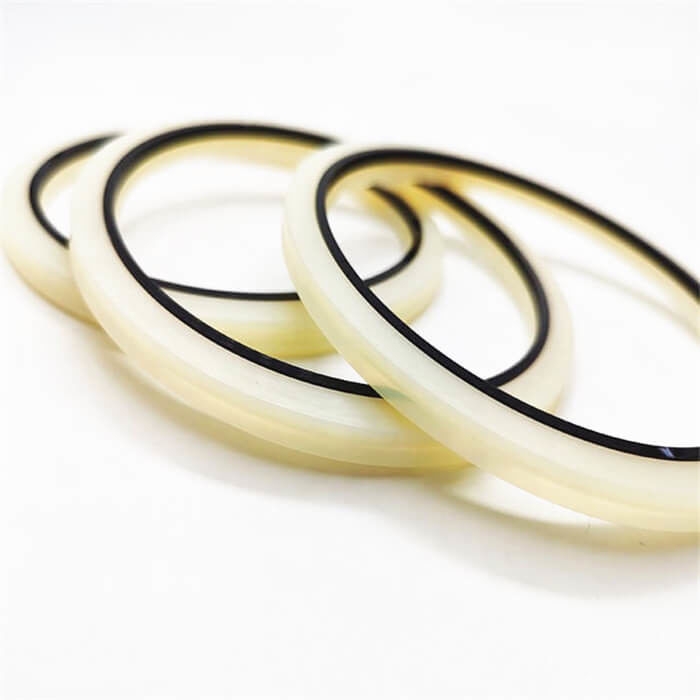Are you seeking an effective way to boost the efficiency of your industrial sealing systems? Buffer ring seals, now improved by HBY technology, could be your ideal solution. These seals play a vital role in preventing leaks and contamination across various industrial applications, ensuring smooth and reliable operations.

HBY technology has transformed these seals with advancements that greatly enhance their performance and durability. Drawing on over eight years of experience, we provide a full range of services including internet marketing, sales, planning, quality control, packaging, warehousing, and logistics for Buffer Ring HBY Seals. Our products are distributed globally, reaching markets in Europe, America, Australia, Iran, Ireland, Greece, and Rwanda. Our expert QC team and skilled workforce guarantee superior quality and craftsmanship, delivering the best products in the industry.
Background
History of Buffer Ring Seals
Buffer ring seals have played a critical role in industrial applications for decades. Initially, these seals were rudimentary, primarily designed to prevent leaks in simple machinery. Over time, as industries evolved, so did the complexity and importance of buffer ring seals. From early rubber-based models to advanced composite materials, the evolution of buffer ring seals reflects the technological advancements and growing demands for efficiency, durability, and reliability in various sectors.
Previous Technologies and Limitations
Before the advent of HBY technology, buffer ring seals were typically made from basic elastomers or metal rings. While functional, these materials had significant limitations, including susceptibility to wear and tear, limited temperature tolerance, and frequent maintenance requirements. These traditional seals often failed under high-pressure or high-temperature conditions, leading to operational inefficiencies and increased downtime in industries reliant on continuous operations.
Introduction to HBY Technology
HBY technology represents a significant leap forward in the design and functionality of buffer ring seals. HBY, short for High-Bearing Yield, integrates advanced materials and innovative design principles to enhance the performance and durability of seals. This technology focuses on creating seals that can withstand extreme conditions while maintaining their integrity and performance over extended periods. The foundational concepts of HBY technology include the use of high-performance polymers, precise engineering, and rigorous testing protocols.
Technical Analysis
Design Features of HBY Buffer Ring Seals
HBY buffer ring seals are distinguished by their sophisticated design and material composition. These seals are crafted from high-performance polymers that offer exceptional resistance to abrasion, temperature fluctuations, and chemical exposure. The design incorporates multiple layers and specialized geometries to optimize sealing performance and reduce wear. Key features include reinforced edges, self-lubricating surfaces, and precision-engineered grooves that enhance the seal's ability to maintain contact and prevent leakage.
Mechanisms of Efficiency Enhancement
The efficiency of HBY buffer ring seals is primarily driven by their advanced materials and design innovations. The use of high-performance polymers reduces friction and wear, leading to longer operational life and fewer maintenance interventions. Additionally, the self-lubricating properties of these materials minimize the need for external lubrication, further enhancing efficiency. The precise engineering of the seals ensures optimal fit and function, reducing the likelihood of leaks and improving overall system reliability.
Comparative Analysis
When compared to traditional seals, HBY-enhanced buffer ring seals demonstrate superior performance across various metrics. Studies show that HBY seals exhibit up to 50% longer lifespan, reduced maintenance frequency, and improved resistance to extreme temperatures and pressures. In high-stress environments, HBY seals maintain their integrity and functionality better than traditional seals, translating into lower operational costs and increased uptime for industrial systems.
Applications
Industry-Specific Applications
HBY buffer ring seals find applications across a wide range of industries. In the automotive sector, they are used in engines and transmissions to prevent oil and coolant leaks. The aerospace industry relies on these seals in hydraulic systems and fuel lines. Manufacturing processes utilize HBY seals in machinery and equipment to ensure operational efficiency and safety. The versatility of HBY technology makes it suitable for any industry where reliable sealing solutions are critical.
Case Studies
Several case studies highlight the successful implementation of HBY technology. In one instance, a major automotive manufacturer reported a 40% reduction in maintenance costs after switching to HBY buffer ring seals in their assembly lines. Another case study from the aerospace sector demonstrated improved fuel efficiency and reduced downtime in aircraft hydraulic systems equipped with HBY seals. These examples underscore the tangible benefits and real-world applicability of HBY technology.
Benefits Realized
The adoption of HBY buffer ring seals has led to numerous benefits, including reduced maintenance costs, improved system reliability, and enhanced efficiency. Companies report significant savings in operational costs due to the extended lifespan and reduced failure rates of HBY seals. Improved reliability translates to fewer unplanned outages, which is critical in industries where downtime can be extremely costly. Overall, HBY technology offers a compelling value proposition for businesses seeking to optimize their operations.
Challenges and Solutions
Technical Challenges
Integrating HBY technology into existing systems can present several challenges. These include compatibility issues with legacy equipment, the need for precise installation techniques, and the initial cost of adoption. Additionally, there may be resistance to change from personnel accustomed to traditional sealing technologies.
Solutions Provided by HBY Technology
HBY technology addresses these challenges through comprehensive support and tailored solutions. Manufacturers offer detailed installation guidelines and training programs to ensure seamless integration. The long-term cost benefits and improved performance of HBY seals quickly offset the initial investment. By providing robust customer support and highlighting the superior performance of HBY technology, these challenges can be effectively mitigated.
Future Research Directions
Future research in HBY technology could focus on further enhancing material properties to extend the lifespan of seals even further. Innovations in self-repairing materials and smart seals that monitor their own condition and performance could revolutionize the industry. Additionally, expanding the applications of HBY technology to new sectors and more demanding environments remains a key area for development.
Economic Impact
Cost Analysis
Adopting HBY technology involves an initial investment in new seals and potentially some modifications to existing systems. However, the long-term savings are substantial. Reduced maintenance costs, fewer replacements, and decreased downtime contribute to a lower total cost of ownership. A detailed cost analysis shows that while upfront costs may be higher, the overall financial benefits far outweigh these initial expenses.
Return on Investment (ROI)
Calculating the ROI for HBY technology involves considering both direct and indirect savings. Direct savings come from reduced maintenance and replacement costs, while indirect savings stem from improved system reliability and efficiency. Case studies indicate that businesses can expect an ROI of 150-200% within the first few years of implementation, making HBY technology a financially sound investment.
Environmental and Regulatory Considerations
Environmental Impact
HBY-enhanced seals contribute to environmental sustainability by reducing the likelihood of leaks and spills, which can cause significant environmental damage. The longer lifespan and reduced maintenance needs of these seals also mean less waste and lower resource consumption over time. This aligns with global efforts to reduce industrial emissions and promote sustainable practices.
Regulatory Compliance
HBY technology helps businesses comply with stringent industry regulations regarding emissions and environmental protection. The improved performance and reliability of HBY seals ensure that systems operate within regulatory limits, reducing the risk of non-compliance and potential fines. By adopting HBY technology, companies can demonstrate their commitment to meeting and exceeding regulatory standards.
Closing Words
HBY technology has transformed buffer ring seals by significantly enhancing their durability, efficiency, and reliability across multiple industries. Utilizing advanced materials and innovative design, HBY technology overcomes the shortcomings of traditional seals, extending their lifespan and lowering maintenance costs. Embracing HBY-enhanced seals results in better system performance, economic gains, and environmental benefits. As industries advance, HBY buffer ring seals emerge as a leading-edge solution, promoting smooth operations and adherence to strict regulatory standards. Investing in HBY technology offers a substantial return on investment and ensures exceptional industrial performance.

